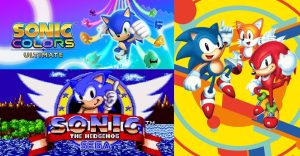10 Best Games Which Hideo Kojima Helped To Develop, Ranked

An icon in the world of gaming, Hideo Kojima has been on the forefront in writing, directing, and designing video games of cinematic scopes. It was in 1987 that Kojima wrote and designed the Konami game Metal Gear, which later spawned Metal Gear Solid in 1998. These games and their numerous sequels and spin-offs cemented Kojima’s position as a gaming visionary. The Metal Gear Solid franchise is still have set a high precedent for stealth games.
His other works too happen to be equally engaging and cinematic, P.T., Policenauts, and Snatchers being a few examples.
10 P.T. (2014)

P.T. stands for the Playable Teaser. The title makes sense, as P.T. initially debuted as an interactive teaser for Silent Hills, the canceled installment of the Silent Hill franchise that was to be developed by Kojima. P.T. is a psychological horror directed by Kojima and Oscar-winning horror maestro Guillermo del Toro. It’s adorned with rich environments, and it plays on supernatural fears by relying on the anticipating dread rather than the actual shock.
The game was well-received with players, who pointed out the disgustingly realistic visuals and overall claustrophobia, even though the puzzles were seen to be a little too complex.
9 Metal Gear (1987)

The game that started it all for Hideo Kojima was initially released for the MSX2 computer in Japan and a few European countries. The military stealth game starred Solid Snake, an operative for the covert force known as FOXHOUND. His mission is to demobilize an armed tank known as Metal Gear that can launch nuclear missiles at any part of the world. Other missions included rescuing captive agents trapped in Metal Gear’s fortified base.
When a reworked port for Metal Gear was released for NES, it sold about a million units in the US alone. It is this success that contributed to the continuing legacy of the franchise.
8 Snatcher (1998)

Snatcher is one game developed by Hideo Kojima that never received an English release, probably due to low sales. Even though the original, Japanese version might not have been played by that many, it has garnered a cult following. Snatcher unleashed Kojima’s cinematic potential and played out greatly as a love-letter to the cyberpunk genre.
Be it Akira or Blade Runner, the quintessential cyberpunk concept design was heavily influenced by urban Japanese aesthetics. Snatcher takes place in such a visually rich neon-heavy environment, with the central character strategizing the defeat of the titular robots who plan to kill and replace humans in modern society.
7 Policenauts (1994)

If Snatcher showed Kojima’s prowess in cyberpunk, Policenauts revealed his fascination with space while drawing on other genres like buddy-cop action-comedies. Initially released as a pixel art-driven game on PC-9821, Policenauts centers around an astronaut found in cryosleep in a space colony. Once he wakes up, he embarks on a journey to investigate the murder of his ex-wife that brings him closer to an organ trafficking ring.
Despite the cinematic potential and blending of genres, the game has a few elements that haven’t aged well, like its sexism and slow pacing.
6 Death Stranding (2019)

Heavily anticipated at the time of its release, Kojima Productions’ Death Stranding boasted of a high-profile motion capture cast including the likes of Norman Reedus, Mads Mikkelsen, and Margaret Qualley. As expected, the game won great acclaim for its story, visuals, and voice acting. However, the gameplay and a few quests were seen to be quite slow.
The plot seemed to be eerily predictive of a future pandemic, as Death Stranding takes place in the future when an apocalyptic event drags society into isolation as destructive creatures roam the face of the planet. Reedus plays Sam Bridges, a ‘courier’ who delivers supplies to colonies and tries to reconnect them.
5 Metal Gear Solid V: The Phantom Pain (2015)

The open-world stealth-driven Metal Gear Solid V: The Phantom Pain takes place between the events of Ground Zeroes, a prequel released a year before, and the original Metal Gear. The protagonist is the mercenary ‘Venom’ Snake who travels to Soviet-controlled Afghanistan to exact revenge from those who slaughtered his forces and almost killed him.
The gameplay and open-ended missions were the highlights for many while criticism was pointed at other elements like the hypersexualization of female characters like Quiet and some unresolved plot points that made the game feel ‘unfinished’.
4 Metal Gear Solid: Peace Walker (2010)

Released exclusively for the PlayStation Portable (PSP) and later for PS3 and Xbox 360, Peace Walker takes place in 1974 as Snake (Big Boss) runs the organization known as Soldiers Without Borders in Costa Rica. Snake later attempts to destroy the nuclear launch platform known as Peace Walker.
Peace Walker was noted for making use of the best elements from previous games like the bonus missions reminiscent of VR Missions, the multi-player format from Snake Eater, and so on. Even though the commercial sales dropped (because of dwindling interest in PSP), the game is still widely regarded as one of Kojima’s best-written and designed works, especially for Snake’s characterization and the setting.
3 Metal Gear Solid 4: Guns Of The Patriots (2008)

Five years after the events of Metal Gear Solid 2, an aged Solid Snake plans to assassinate his nemesis, Liquid Snake, as the latter seeks to take control over the AI system known as Sons of the Patriots (that controls private military companies all over the world).
The game was praised heavily for its tragic undertones, as Solid Snake (rechristened as Old Snake), walks down a tragic road towards his own defeat. Released only on PlayStation 3, the game has to be one of the best and most ambitious closures to a gaming character ever.
2 Metal Gear Solid 2: Sons of Liberty (2001)

If one were to assess Kojima’s skills at writing and directing cinematic games, then Metal Gear Solid 2: Sons of Liberty is a top-notch example. Even though initial fans might have had mixed reactions regarding its introspective storylines, the game was way ahead of its times. When other video games were just focused on covert military operations with violence, Sons of Liberty touched upon fake news, censorship, and the polarizing post-truth politics that can be seen in modern society today.
Nothing is certain and loyalties keep on changing as the titular terrorist group seizes an offshore clean-up facility and kidnaps the American President, threatening to trigger an apocalyptic natural disaster if their demands aren’t met.
1 Metal Gear Solid 3: Snake Eater (2004)

A PlayStation 2 Classic, Metal Gear Solid 3 takes place thirty years before the original Metal Gear, as the FOXHOUND operative Naked Snake stealthily plans to rescue a Soviet rocket scientist and assassinate his former boss, who has defected. Because of the conflict between Snake and his former mentor and for its rich jungle setting, the game can increasingly be compared to cult war films like Apocalypse Now.
Snake was seen as a way better protagonist than Raiden from MGS2. While its predecessor delved more on philosophical matters, Snake Eater was seen as a welcome change for fans who desired more action.
About The Author


















